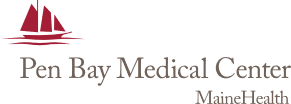Title Page
-
Department/Office
-
Site conducted
-
Conducted on
-
Prepared by
-
Address
Inspection Checklist
-
Are all employees/medical staff wearing their ID badges in plain view? Provide #’s below:
-
# Wearing Badge:
-
# Not Wearing Badge:
Section A. General Safety
-
Employees can verbalize procedures for reporting unsafe situations, equipment, and other safety concerns
-
Floors, vents, curtains/blinds, walls, work surfaces, and furniture are clean and free of tears, or cracks
-
Compressed gas cylinders (oxygen, etc.) are properly stored. [All tanks secured; less than 300 cu ft. O2 in area (i.e.12 E tanks; full tanks not in same rack as partial/empty tanks, etc.]
-
Floors clear of tripping hazards/spilled liquids/stains
-
Employees can state the location and procedure for 02 shut off
-
O2 question tallies: # Yes
-
O2 question tallies: # No
-
Integrity of floor mats: Are mats intact?
-
Are there expired materials/supplies on hand?
-
Integrity of wooden surfaces (tables, chairs, railings etc.) intact
-
Are all patient medical records/patient information in a secured location?
-
Are ceiling tiles clean, stain free, and in good condition?
-
Eye wash stations have been inspected and are unobstructed
Section B. Electrical Safety
-
Employee are in-serviced as new equipment arrives. Documentation is present
-
Are electrical cords and plugs free of damage or fraying?
-
Access to electrical panels is clear – no storage within 3 feet of panel
-
Electrical outlets are in good condition
-
All biomedical equipment has inventory inspections are up to date
-
Electrical equipment is clear of tools, paper, refuse and clutter
-
Are permanent extension cords in use?
-
All nonclinical electrical equipment in patient care areas have initial safety inspection checks
Section C. Safety Management Program
-
Employees can located the WCGH safety policies in department or on line
-
The SDS chemical inventory is current
-
Chemical containers are properly labeled
-
Employees can articulate their role in a disaster (Code Triage)
-
Employees can locate and answer questions pertaining to Department SDS
-
SDS question tallies: # Yes
-
SDS question tallies: # No
Section D. Fire Safety
-
Employees can verbalize R.A.C.E. /PASS
-
Sprinkler heads are free of dust or foreign materials/escutcheons are present
-
Employees can locate fire extinguishers, pull stations and fire exits
-
Life Safety question tallies: # Yes
-
Life Safety question tallies: # No
-
Is storage closer than 18 inches to bottom of sprinkler head (20 inches from ceiling)?
-
Stairwells, doorways and hallways are free of obstruction
-
Doors with auto-latching verified to self-close and latch; all door latch appropriately when closed
-
Employees can identify emergency lighting and outlets
-
Is smoke resistant sealant used on corridor walls and doors?
-
Exit signs are illuminated. Emergency lights work. Back-up batteries work (Hit the test button if available)
-
Are plugs for holiday decorations plugged directly into an outlet (i.e. no stacked plugs)
-
Doors close freely and are not held open by wedges
-
Are sprinkler heads free of dust or other foreign material? Is escutcheon present?
-
Fire Extinguishers and pull stations are unobstructed
-
Are all holes and other openings in walls fire stopped? Is I-Beam insulation intact?
-
All fire extinguishers are tagged and checked monthly
-
Are all high amp drawing appliances like refrigerators, coffee makers, etc. plugged directly into the wall?
-
Is equipment and supplies stored on the floor?
-
Are vitals or other machines being charged in hallway(s)?
Section E. Cleanliness, Infection Control, Clinical Inspection Items
-
Patient and exam rooms are clean. (No visible dust on surfaces)
-
Are patient contact items, food stuffs, bottled water containers stored on the floor?
-
Sharp containers are securely installed, locked tops fit correctly, and not overfilled
-
Is there storage in under sink cabinets (only chemicals allowed)
-
Clean linen kept separate from soiled linen disposal. /Clean linen is covered
-
All upholstered surfaces (i.e. wheelchairs, exam tables, stool, chairs, etc.) are intact – no rips, tears
-
Adequate amount of soap and paper towels at each sink and treatment area
-
All casters on equipment in patient areas are in good shape (not rusted)
-
All medications/needles/syringes kept in locked rooms/locations
-
Code Cart and Pediatric Cart Logs are current and complete
-
Refrigerators/Thermometers - Refrigerators are clean. Medications/Specimens labeled/ dated appropriately. No Food/Drink storage in medication/specimen refrigerator. Temperatures are checked and logged. Thermometer is calibrated.
-
MD Practices: Betadine, hydrogen peroxide, isopropyl alcohol bottles date/time/initials when opened & discarded 12 months or manufactured expiration date whichever is sooner. Hospital patients -- date/time/initial small bottles dispensed and discarded or sent home with patient.
-
Personal protective equipment is available/used
-
Emergency Call Light Cord in bathroom not touching floor, is not too short (can be reached from someone on floor), not tied to grab bar
-
All multi-dose vials dated when opened dated/timed/initials & discarded within 28 days (includes medications)
Section F. Safety Tour Deficiencies Notes
-
Were additional deficiencies found? (See note for details)
-
Additional Tour Notes







